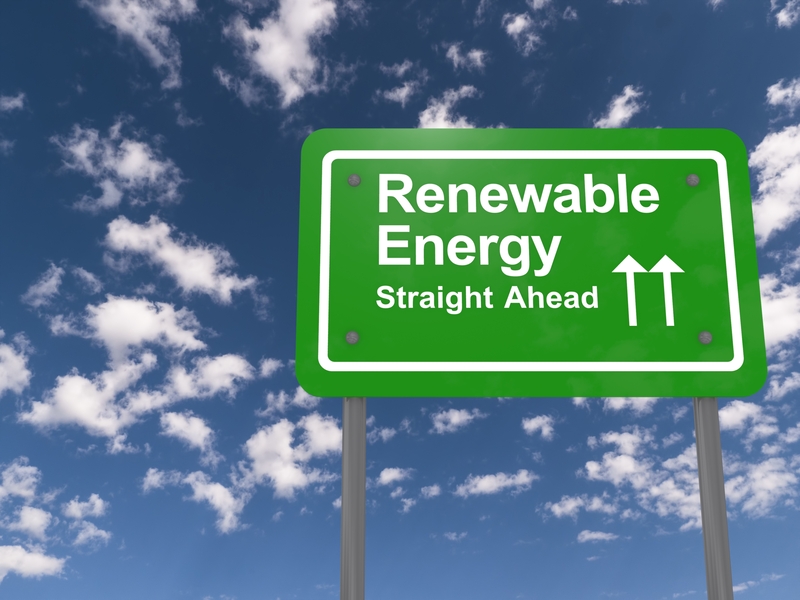As 2021 progresses, it’s important to look at renewable energy trends from the last 12 months to help us get an idea of the future of renewable resources and the sustainable energy sector. In this article, we’ll examine green energy stats from 2020 and the sustainable energy trends that have carried over to 2021 in an effort to inform you, so that you’re able to create the necessary sustainability goals for your business.
At Aggressive Energy, we’re experts on alternative energy. We’re committed to educating our customers on the many benefits of using clean energy and working collaboratively to meet your energy goals.
Read on to learn about trends in the renewable energy industry!
Overview of 2020 Renewable Energy Stats

- Total US energy consumption dropped 7.8%, which was the largest decline in 30 years.
- Renewable energy sources had a record-breaking 11% year-on-year rise in power grid contributions.
- Renewable sources generated one-fifth of total U.S. power.
- Coal’s contribution to U.S. power generation fell to 19%.
- Wind and solar power built a combined 33.6 GW, exceeding their previous records despite a rocky start to the year.
- Over 100 companies made decarbonization commitments – 65 companies joined the RE100 initiative, while 59 joined EP100.
Renewable Energy Trends

The Renewable Energy Industry Proved Itself
Like every industry, the Covid-19 pandemic created a number of hurdles for the sustainable energy sector that threatened its progress. In the second quarter of 2o20, several wind power and solar energy equipment manufacturing plants experienced declined (or halted) production. Other renewable energy projects faced similar declines in activitiy, including a significant drop in solar panel installation rates. By July, it looked like 2020 would be the least productive year for the renewable energy industry by far.
Miraculously, 2020 ended up being the industry’s most productive year yet. The solar power sector reached a new high of 16.5 GW capacity built, while the wind energy sector constructed a whopping 17.1 GW of capacity. Renewable energy trends show a steady rise in contribution to U.S. energy production and highlight increased endurance across the sector as a whole.
This is apparent not just from the way it was able to bounce back, but also because it was able to do so while its manufacturers simultaneously focused their efforts on ensuring Covid-19 testing sites were efficiently powered and heated.
Related Post: Why Solar Power For Business Is Worth The Investment
Companies With Renewable Energy Goals

Over the last few years, more and more companies have made public statements claiming support for the green energy movement. However, simply stating your support for clean energy is no longer enough. Big corporations know this, which is why companies are going a step further and committing to renewable energy goals that have tangible results.
The RE100 and EP 100 initiatives
As a result, 65 companies joined the Climate Group’s RE100 initiative, which pledges to offset the entirety of their energy consumption with renewables. This brought the total number of companies to 285. Additionally, 59 companies joined the EP100 campaign. With a total of 123 companies, EP100 pledges to double their energy productivity by 2030.
Green energy contracts signings declined
Due to the pandemic, a large portion of the nation’s workforce went remote. This resulted in the number of signed carbon-free energy contracts dropping for the first time in five years. Many companies don’t know the capacity in which their employees will return to the office, if they do at all. Not knowing their energy needs definitely plays a role in this energy trend.
Even with less signed contracts, companies know that it’s no longer enough to make promises with no follow-through. Their customers and employees expect to see a bigger commitment from them as well as a plan for it. Plus with government-mandated emission reduction requirements and clean energy tax credits available, they don’t have much room to not commit to green energy sources.
Long-Term Decarbonization Policies
In December 2020, Congress passed the second Covid-19 relief stimulus package. While the first package did not include any renewable energy incentives, the second one included massive grants for U.S. Energy Department research. It also expanded renewable resources and carbon capture technologies tax credits. Specifically, the solar and wind production tax credit (PTC) and the investment tax credit (ITC).
PTC and ITC for land-based wind were extended for one year at 60% of the project’s full value, while solar ITC was extended two years at 26%. Tax credit for carbon capture was also extended by two years. The legislation also limited hydrofluorocarbon emissions, which is a huge step in the right direction to fight climate change.
In 2021, the Biden administration has set the stage to convert renewable energy trends into real growth for the sustainable energy sector. After making climate change a main focus of his campaign, President Biden re-committed the U.S. to the Paris Climate Agreement. He also introduced the American Jobs Plan, a $2 trillion infrastructure proposal. If signed into law, the plan would be one of the biggest government attempts to reduce carbon dioxide emissions – something he recently pledged to cut in half by 2030.
Green Energy Innovations Make Renewable Energy More Accessible

By now, it’s safe to say that most people are on board with renewable energy trends. However, for some people, clean energy just isn’t as accessible or cheap as fossil fuels due to limited access in their location. Green energy innovations have skyrocketed accessibility by introducing more and more alternatives to the energy market.
All the recent investments into new trends in renewable energy technologies have expedited the commercialization timeline of clean energy. As a result, we’re seeing more and more up-and-coming renewable energy companies emerge. A lot of these are traditional energy companies joining the market as multi-sector providers, which is predicted to streamline the eventual merge of the renewable energy sector with the traditional.
This allows energy providers like us to create hybrid plans for customers that help them make the switch from nonrenewable to renewable resource electricity over a longer period of time. At Aggressive Energy, we’ll i
Contact us today to learn how we can work for you!